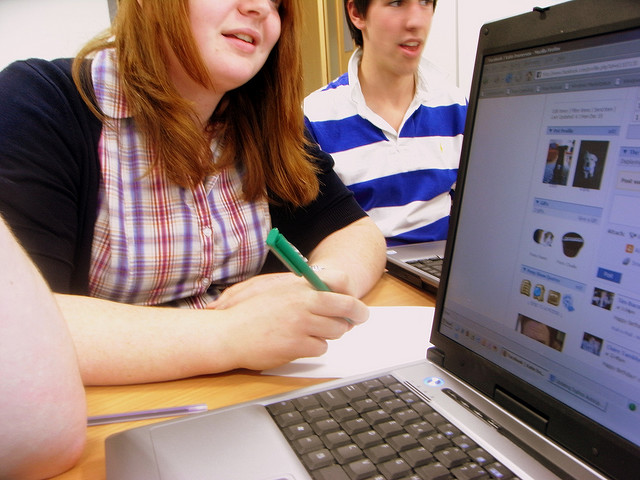Education content is sponsored by the CUNY Graduate School of Journalism, which offers an intensive, cutting edge, three semester Master of Arts in Journalism; a unique one semester Advanced Certificate in Entrepreneurial Journalism; and the CUNY J-Camp series of Continuing Professional Development workshops focused on emerging trends and skill sets in the industry.
We are witnessing the emergence of something profound: Humans, historically divided by geography, culture and creed, are beginning to connect and collaborate on a scale never seen before. The driving force behind this creative wave are digital tools and networks that allow new forms of collaboration and knowledge creation.
What starts out as social networking is evolving into social production. We’ve witnessed how self-organizing groups, leveraging social media such as Twitter, Facebook and Wikipedia, have launched revolutions throughout the Arab world and created the most important reference work in the English language in less than 10 years.
In spite of all the potential to innovate surrounding blogs, forums, wikis and social networks, there are legions of detractors. And no institution is more skeptical about the benefits of social media than education. But there are also few institutions that have more to gain from social media.
social media as an amplification of learning
Granted, not every use of social media is remarkable. And some might be downright problematic, even detestable. But all media evolves and can be used or misused.
Writing initially emerged as a form of record keeping in Mesopotamia. Only later was it used to tell stories, write laws and record history. And just because some people used writing in this more noble fashion, it didn’t prevent others from writing propaganda, hate, smut and gossip.
Rather than focusing exclusively on the problems, educators should be experimenting with how these new forms of social media can amplify student learning. Because social media enables collaboration, educators ought to be asking what social dimensions of learning might be enhanced by using these tools and networks?
Fortunately, a compelling landmark study on the importance of social interaction provides valuable insight. Richard J. Light, of the Harvard Graduate School of Education, discovered that one of the most significant factors in students’ success was their ability to participate in study groups. What the study reveals boils down to this: Understanding is socially constructed through interactions with others. This implies that we need to focus more attention on how we learn most effectively, and the signs point toward social interaction.
learning through synergy
Since the beginning of our evolutionary adventure on the east African savanna, humans have been social creatures. Although we can think and create in isolation, it’s when we work, delegate and exchange within the hive that synergy is created. If the whole is greater than the sum of its parts, then it underscores the power of group effort. And, according to Clay Shirky, a professor of Interactive Telecommunications at NYU, who wrote in his book Cognitive Surplus: Creativity and Generosity in a Connected Age, “The centrality of group effort to human life means that anything that changes the way groups function will have profound ramifications for everything from commerce and government to media and religion.”
Social media has the potential to revolutionize our model of learning by transforming individual students from information silos into smart nodes within a dynamic and interdependent learning network. By serving as the connective tissue of a learning environment — whether it’s a class, school or community organized around common interests — social media can enhance student communication, collaboration and problem solving by aggregating perspectives. Through the process of sharing our perspectives we can get closer to seeing the whole picture. With a more comprehensive picture we improve our ability to innovate and problem solve.
In a 1996 interview with Wired magazine, former Apple CEO Steve Jobs said that without diverse experiences and perspectives you won’t “have enough dots to connect and one ends up with very linear solutions without a broad perspective on the problem.” Social media exposes us to a galaxy of dots, and through education we can provide students with the tools to begin the connection process.
Aran Levasseur has an eclectic background that ranges from outdoor education to life coaching, and from habitat restoration to video production. For the last five years he’s taught middle school history and science. From the beginning he’s been integrating technology into his classes to enhance his teaching and student learning. He recently gave a talk at TEDxSFED on videogames and learning. Currently he’s the Academic Technology Coordinator at San Francisco University High School.
Education content is sponsored by the CUNY Graduate School of Journalism, which offers an intensive, cutting edge, three semester Master of Arts in Journalism; a unique one semester Advanced Certificate in Entrepreneurial Journalism; and the CUNY J-Camp series of Continuing Professional Development workshops focused on emerging trends and skill sets in the industry.


